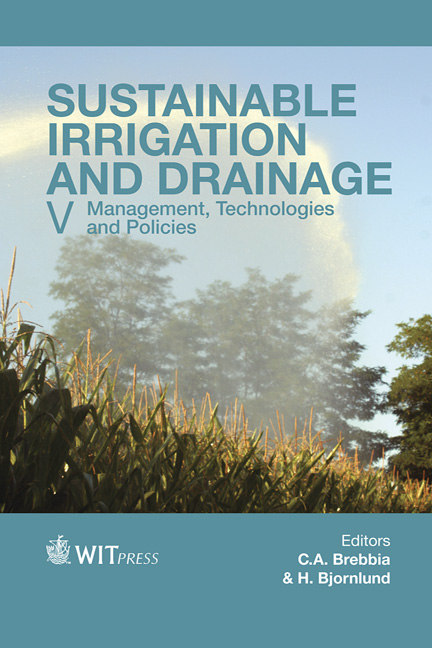The Yield And Yield-character Variability Of Traditional Leafy-crop Cucumis Africanus In Response To Variation In Irrigation Intervals And NPK Fertilizer Rates
Price
Free (open access)
Transaction
Volume
185
Pages
10
Page Range
67 - 76
Published
2014
Size
301 kb
Paper DOI
10.2495/SI140071
Copyright
WIT Press
Author(s)
R. J. Nkgapele, M. S. Mphosi
Abstract
An experiment laid out in a split-plot design and replicated three times was conducted to study the effects of irrigation frequency (at 2, 4 and 6 day intervals) and NPK fertilizer rates (0 Kg NPK ha−1, 60-40-20 kg NPK ha−1, 120-80-40 kg NPK ha−1 and 180-120-60 kg NPK ha−1) on biomass yield, harvest index (HI), productivity scores, and leaf and non-leaf yield characters of Cucumis africanus. A six day irrigation interval and 60-40-20 kg NPK ha−1 application rate produced significantly higher (P < 0.05) fresh vegetative matter, while apparent and structural HI’s were pronounced when 120-80-40 kg NPK ha−1 was applied. The highest productivity scores were produced by moderate irrigation frequency of four day intervals while applying nutrient mixtures at the rate of 120-80-40 kg NPK ha−1. In conclusion, the study results depict that Cucumis myriocarpus as a dual purpose, leafy vegetable and ethnobotanical crop, can grow with minimal irrigation water application and a moderate supply of nutrients to produce adequate biomass yields for rural households in the Limpopo Province.
Keywords
harvest index, productivity score, leaf length, ethnobotanicals





